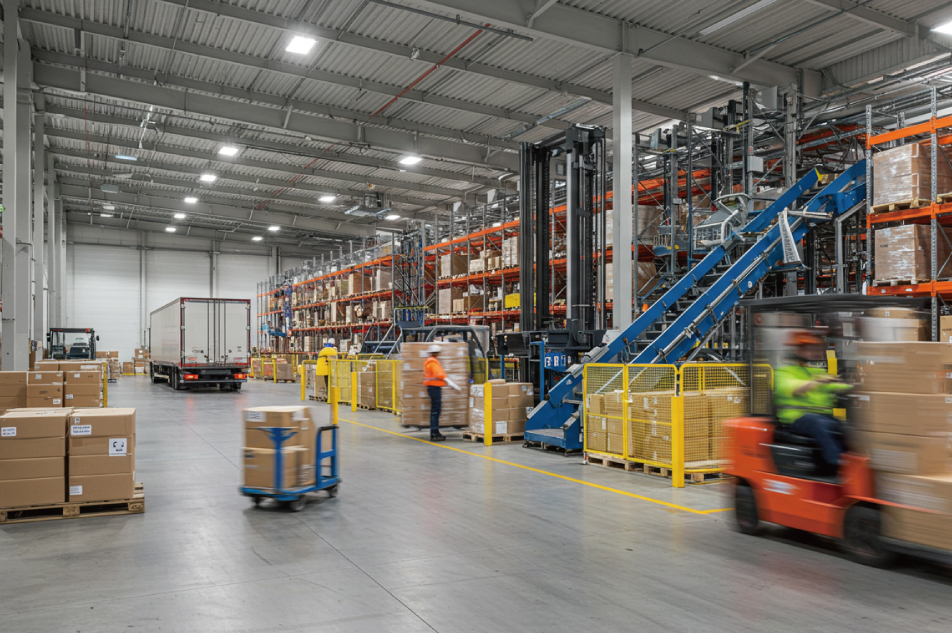What is Cross-Decking: Benefits and Uses

In the realm of warehousing and logistics, competition reinforces the pursuit of innovation. One such strategy gaining prominence is cross-docking, a technique that expedites product flow and minimizes storage requirements.
What is Cross-Docking?
Cross-docking is a logistics practice where goods are transferred directly from incoming shipments to outgoing vehicles, bypassing long-term storage. This method significantly reduces handling time and storage costs, accelerating product movement through the supply chain.
The essence of cross-docking lies in its ability to synchronize inbound and outbound shipments. Products arrive at a cross-docking facility, undergo minimal processing, and swiftly depart for their final destinations. This streamlined approach eliminates the need for extensive warehousing, cutting operational expenses and enhancing overall efficiency.
The Mechanics of Cross-Docking Operations
Cross-docking facilities serve as pivotal hubs in the supply chain, facilitating the seamless transfer of goods. The process typically unfolds as follows:
- Incoming shipments arrive at the cross-docking terminal.
- Products are unloaded and sorted based on their destinations.
- Items are consolidated with other shipments heading to similar locations.
- Outbound trucks are loaded with the sorted and consolidated goods.
- Products depart for their final destinations without entering long-term storage.
This streamlined approach demands precise coordination and real-time information exchange among suppliers, carriers, and recipients. Warehouse Management Systems (WMS) play a crucial role in orchestrating these complex operations, ensuring smooth product flow and minimizing errors.
Types of Cross-Docking
Predistribution Cross-Docking
Suppliers prepackage and label products according to their final destinations. Upon arrival, these pre-sorted items are transferred to outbound vehicles without additional handling.
Best suited for:
- Products with consistent, predictable demand
- Time-sensitive or perishable items
- Highly coordinated supply chain partners
Consolidated Cross-Docking
Incoming shipments are reorganized, combined, or split to meet specific customer requirements or optimize transportation efficiency.
Ideal for:
- Products requiring customization or value-added services
- Shipments needing consolidation to reduce transportation costs
- Orders comprising items from multiple suppliers
Hybrid Cross-Docking
Combines traditional warehousing with cross-docking principles. Some products are briefly stored before being combined with cross-docked items.
Best suited for:
- Businesses with diverse product lines and fluctuating demand
- Companies balancing just-in-time delivery with safety stock
- Operations dealing with seasonal or promotional items
Benefits of Cross-Docking
Adopting cross-docking strategies offers numerous advantages:
- Reduced inventory holding costs
- Decreased risk of product obsolescence
- Improved order fulfillment speed
- Enhanced freshness for perishable goods
- Lower labor costs associated with picking and storing
- Optimized use of warehouse space
- Increased supply chain visibility and control
Challenges in Cross-Docking Implementation
Despite its benefits, cross-docking poses certain challenges:
- Need for precise coordination among supply chain partners
- Reliance on robust information systems and real-time data exchange
- Requirement for specialized facilities and equipment
- Potential increase in transportation costs if not optimized
- Risk of bottlenecks during peak periods
Industries Benefiting from Cross-Docking
Cross-docking is particularly effective in:
- Retail: Fast-moving consumer goods and fashion items
- Automotive: Just-in-time delivery of components
- Food and Beverage: Maintaining freshness of perishable products
- E-commerce: Swift order fulfillment
- Pharmaceuticals: Temperature control and reduced handling
Technological Advancements Enhancing Cross-Docking
Modern cross-docking relies on cutting-edge technology:
- WMS: Orchestrates complex operations
- RFID: Enables real-time product tracking
- Automated sortation systems: Efficiently process shipments
- Advanced Analytics: Optimize decisions and predict demand patterns
- IoT devices: Monitor environmental conditions and product integrity
Future Trends Shaping Cross-Docking
Emerging innovations are transforming cross-docking:
- AI and Machine Learning: Improving predictive capabilities
- Robotics and Automation: Enhancing efficiency
- Blockchain: Strengthening traceability and security
- Green Logistics: Promoting sustainability
- Cloud Platforms: Facilitating seamless collaboration
Conclusion: Evaluating Cross-Docking for Your Business
Cross-docking offers significant benefits but requires careful evaluation. Businesses must assess product characteristics, demand patterns, and logistical needs to determine if it aligns with their objectives.
Do you need more information?
Our team of experts will be happy to help you with any questions you may have.
More information